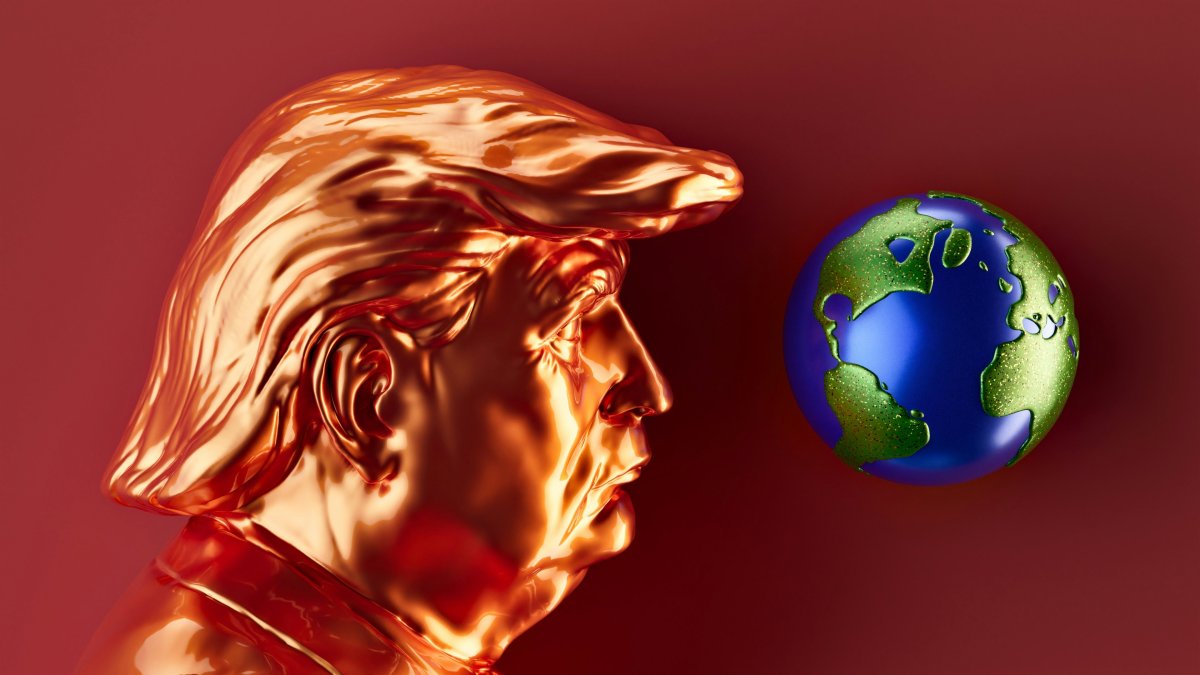
Imagine opening your mailbox to find a $2,000 check from the government—not as a tax refund or stimulus, but as a “dividend” from tariffs. That’s the vision President Trump recently floated on Truth Social, claiming that America’s booming tariff revenue could soon translate into direct payments for everyday citizens.
With claims of trillions pouring in and factories rising across the country, the promise sounds like a patriotic jackpot. But behind the bold rhetoric lies a tangle of economic, legal, and political hurdles.
From Supreme Court scrutiny over presidential tariff authority to questions about how such a payout would be structured—via tax cuts, direct checks, or something else entirely—the road to realizing this dividend is anything but smooth.
As the debate heats up, one thing is clear: turning tariff theory into tangible cash will require more than a viral post and a confident forecast. Let’s unpack why this $2,000 promise is hanging in the balance—and what it reveals about the future of trade, populism, and economic storytelling.
What Trump is actually promising
President Trump stirred fresh debate over his trade policy with a Sunday morning post on Truth Social, pledging “at least $2000 a person (not including high income people!)” and dismissing critics of tariffs as “FOOLS”.
The statement was part of a sweeping endorsement of his economic approach, which he credits with transforming the nation’s financial landscape. According to Trump, tariffs have helped make the US. “the Richest, Most Respected Country In the World, With Almost No Inflation, and A Record Stock Market Price. 401k's are Highest EVER.”
While the promise of a tariff-funded payout may energize supporters, economists and legal analysts are questioning how such a plan would be implemented—and whether it’s even feasible under current law. As the campaign trail heats up, this proposal adds a provocative twist to the ongoing conversation about trade, populism, and presidential power.
As of 2025, the US Treasury has reported collecting $214.9 billion in tariff revenue, with projections suggesting annual totals could climb to between $300 billion and $400 billion. This surge in trade-related income has fueled renewed speculation about how those funds might be used.
Former proposals from President Trump have hinted at the possibility of turning tariff earnings into direct financial relief for Americans. Back in July, he floated the concept of rebate-style stimulus checks funded by tariff proceeds—a move that would mark a dramatic shift in how trade policy impacts household budgets.
While the idea remains theoretical, it’s gaining traction in political circles as a populist pitch with potentially wide appeal.
There’s a significant hurdle standing between the promise and the payout: any plan to distribute tariff-funded checks would almost certainly require congressional approval.
Without legislative backing, the executive branch has limited authority to unilaterally issue such payments. Adding to the uncertainty is the lack of clarity around who exactly would qualify.
While Trump emphasized that “high income people” would be excluded, he hasn’t defined what income level sets that bar—leaving both the scope and feasibility of the proposal open to interpretation and debate.
The legal minefield
This is where the legal terrain gets especially tricky.
Multiple lower courts have already determined that Trump may have overstepped his bounds, both statutorily and constitutionally, when implementing certain tariff measures. In separate decisions, the Court of International Trade and the US Court of Appeals for the Federal Circuit sided with challengers who argued that the administration exceeded its legal authority.
These rulings cast doubt on the durability of any future tariff-based initiatives, especially those that hinge on executive power without clear congressional backing.
Trump has broken new ground by attempting to apply the International Emergency Economic Powers Act (IEEPA) as a tool for imposing tariffs—something no other president has done since the law’s enactment in 1977.
Legal critics argue that this move stretches the statute beyond its intended scope, pointing out that the word “tariff” doesn’t even appear in the IEEPA’s text.
This unconventional use of emergency economic powers has become a flashpoint in ongoing legal battles, raising questions about the limits of executive authority in trade policy.
Did you know?
The Supreme Court challenge explained
In a lengthy session of oral arguments lasting over two and a half hours, most Supreme Court justices seemed to lean toward the position held by small businesses and state governments challenging the legality of certain tariffs.
At the heart of the case is a fundamental question: did Congress ever intend for the IEEPA to authorize the use of tariffs, or was the law designed strictly for imposing sanctions and freezing assets? The outcome could redefine the boundaries of presidential power in trade policy and set a precedent for how emergency economic tools are interpreted moving forward.
Both the Trump administration and those contesting the tariffs have urged the Supreme Court to expedite its decision, but the timeline remains uncertain.
A ruling against the tariffs could carry massive financial consequences: the federal government may be required to issue tens of billions of dollars in refunds to companies that have already paid those duties.
The stakes are high—not just for trade policy, but for the broader legal boundaries of executive power and economic accountability.
Also read: Could you really get a $2,000 check from Trump's tariff windfall?

When the sums don't add up
Even if the courts ultimately greenlight the plan, the numbers behind Trump’s proposed tariff dividend raise serious questions.
Erica York, a tax analyst at the Tax Foundation, ran a rough estimate based on a $100,000 income threshold for eligibility.
Under that assumption, roughly 150 million American adults would qualify for the payout—bringing the total cost close to $300 billion. That figure rivals the scale of major federal stimulus packages, suggesting that even with sufficient tariff revenue, distributing such a large sum would be a complex and costly endeavor.
York noted that “the math gets worse accounting for the full budgetary impact of tariffs: a dollar of tariff revenue offsets about 24 cents of income and payroll tax revenue. Adjusting for that, tariffs have raised $90 billion of net revenues compared to Trump's proposed $300 billion rebate”.
While talk of direct payments has captured public attention, the Trump administration has emphasized a different fiscal priority.
Treasury Secretary Scott Bessent told CNBC that the administration’s main goal for tariff revenue is to reduce the national debt, which has ballooned to approximately $37 trillion. This focus on debt reduction suggests that even if tariff collections are robust, diverting those funds toward individual payouts may not align with the administration’s broader financial strategy.
The political reality
In an interview with ABC News, Treasury Secretary Scott Bessent clarified that he hasn’t discussed the proposed $2,000 payments directly with President Trump. However, he noted that economic stimulus doesn’t have to take the form of a physical check.
According to Bessent, there are multiple ways to deliver financial relief, suggesting that if the administration pursues such a plan, it could be structured through alternative mechanisms beyond direct cash payouts.
“The $2,000 dividend could come in lots of forms, in lots of ways,” Bessent said.
Smaller-scale proposals have already surfaced, offering a glimpse into how tariff revenue might be redistributed.
Senator Josh Hawley of Missouri has put forward a bill that would provide $600 in tariff rebates to most American adults and their children.
Framing the measure as a way to share the gains from Trump-era trade policies, Hawley stated, “My legislation would allow hard-working Americans to benefit from the wealth that Trump's tariffs are returning to this country.”
While more modest than the $2,000 figure Trump has floated, the proposal underscores growing interest in turning trade revenue into direct household support.
Economists are sounding a note of caution about the potential ripple effects of tariff-funded rebates.
While such payments might help offset the elevated costs consumers have already absorbed due to import duties, they could also inject fresh momentum into inflation.
The concern is that funneling large sums of money back into households—especially in a tight supply environment—could mirror the inflationary surges seen after earlier stimulus efforts, ultimately undermining the relief those rebates aim to provide.
What happens next
The next chapter in the tariff debate may be shaped by the Supreme Court, which is expected to issue a ruling in the coming months.
If the justices decide that tariffs imposed under the IEEPA are unconstitutional, the Trump administration has signaled it won’t back down.
Officials say they’re prepared to reestablish similar trade barriers through alternative legal channels. US Trade Representative Jamieson Greer affirmed that “we'll be able to have the same effect,” underscoring the administration’s intent to preserve its tariff strategy regardless of the Court’s decision.
As legal challenges unfold, one potential stopgap lies in Section 122 of the Trade Act of 1974. This provision allows the president to impose temporary tariffs—up to 15 percent for a period of 150 days—if there's a significant imbalance in the nation’s payments.
While limited in scope and duration, it could serve as a short-term mechanism to maintain tariff pressure while broader legal or legislative solutions are pursued.
For now, the $2,000 promise remains exactly that—a promise contingent on legal victories, congressional cooperation, and economic mathematics that currently don't seem to favor direct cash payments to Americans.
Despite its populist appeal, Trump’s $2,000 tariff dividend remains more promise than policy.
Legal challenges, economic constraints, and political roadblocks continue to cloud its path—from Supreme Court scrutiny to congressional hurdles and inflation risks.
Whether framed as direct checks or alternative relief, the idea reflects a broader shift in how trade, executive power, and economic storytelling intersect. For now, the payout is far from guaranteed.
Have you ever received a government rebate or stimulus? What impact did it have on your household? If trade policy directly affected your wallet, how would you want that money used—debt reduction, rebates, or something else? What kind of financial relief would make the biggest difference in your life right now? We’d love to hear about your experiences and plans—share your thoughts with the community!






